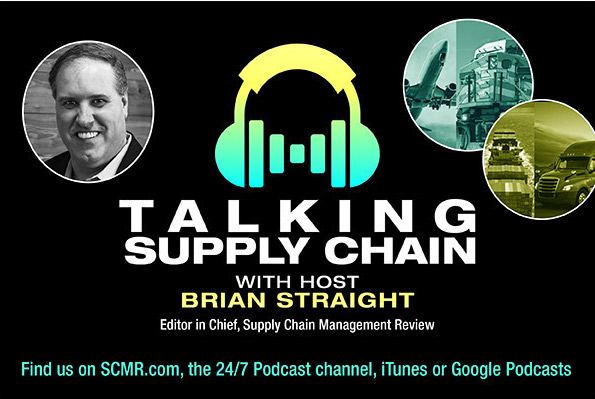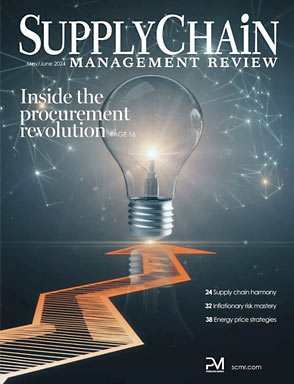By Simon Bailey, VP analyst, Gartner Supply Chain Practice
In today’s rapidly evolving and uncertain business landscape, CEOs are increasingly relying on their C-suites for profitable growth, with 62% citing this as a top priority in Gartner’s 2024 CEO survey. To align with their CEO’s priorities, chief supply chain officers (CSCOs) should look for opportunities for supply chain to contribute to driving growth.
Traditionally, supply chains have focused on cost savings and operational efficiency, often measured by metrics like On Time, In Full (OTIF). However, as CEOs increasingly expect supply chains to support growth initiatives, CSCOs must put a new emphasis on strategies to support customer experience (CX).
In line with this increased prioritization, Gartner predicts that by 2027, 30% of large global supply chains are expected to adopt the Customer Effort Score (CES), as CSCOs play an increasingly leading role in driving profitable growth.
CES measures whether customers feel their experience was low-effort and is often more accurate than customer satisfaction in predicting future loyalty. This focus on reducing customer effort reflects a broader trend toward making interactions seamless and intuitive, which can lead to increased customer retention and advocacy.
Highlighting the supply chain’s capacity to impact the CES will be crucial in gaining the support and resources necessary for transformative projects. To accomplish this, CSCO should take the following steps.
1.) Gain greater understanding of customers
To strengthen their role in driving growth, supply chain leaders must develop a direct understanding of customers. This can be achieved through a voice-of-the-customer (VoC) program. VoC captures customers’ opinions, needs, and perceptions, often collected through surveys, interviews, and feedback channels, to inform product and service improvements.
Supply chains should start by reviewing the existing VoC data within the organization that has been gathered by functions such as sales and marketing. Then, working in alignment with those other functions, further develop the depth of customer understanding related to supply chain areas such as ease of ordering, delivery timeliness and accuracy and supply chain collaboration.
By understanding the pain points impacting customers, CSCOs can tailor their strategies to meet specific customer needs, thereby enhancing customer experience and loyalty.
2.) Introduce the Customer Effort Score
Supply chain leaders often worry that focusing on growth will increase total costs by offering more to all customers. However, improving CX need not be additive. By strategically redesigning processes, supply chains can enhance customer experience without incurring significant additional expense.
The question asked to assess Customer Effort is simply this: “To what extent do you agree or disagree with the following statement: The company made it easy for me to (handle my issue).” You can flex the last part of that sentence to focus on specific areas such as—“to place my order” or “to return the products.” The goal of these questions is to understand the degree to which the company makes it easy for customers to work with them.
Improving customer ease can also benefit the supplier’s supply chain as handling issues, processing returns, and increased touch points all add cost to both customer and supplier. By understanding each of your customer segments well, you may find areas where you are over-serving their needs. This could include speed of delivery for example. Companies often assume that faster is always better, but customers are more focused on delivery reliability than speed and would happily wait an extra day.
Your workforce may also encounter fewer errors, fewer questions, and expend less effort if you redesign processes with customer effort in mind.
3.) Align supply chain strategies with customer segmentation
Once the CES metric is in place, delve deeper into individual customer interactions. Create personas and develop customer journey maps to identify and address supply chain-related pain points.
Personas are fictional representations of customer archetypes that guide CX decisions, strategy, collaboration, and relationship improvement. Consider roles such as procurement, logistics, or replenishment team. Build personas based on research and data to gain insights that drive engagement and understanding. By doing so, CSCOs can anticipate customer needs and proactively address potential issues.
Customer journey maps highlight customers’ perceptions, desires, and requirements, aligning organizational resources with these needs. They dismantle silos and foster interdepartmental collaboration to improve customer outcomes. This enables supply chains to tailor strategies to specific customer needs and preferences, enhancing overall customer experience and loyalty.
By adopting a customer-centric approach and leveraging metrics like CES, supply chain leaders can demonstrate the supply chain’s potential to boost CX and position themselves as key contributors to profitable growth.
About the author:
Simon Bailey is a vice president, analyst, in Gartner Supply Chain’s CSCO enablement team where he focuses on helping clients develop their strategy. His research spans strategic priorities for the CSCO including ecosystem partnerships and customer centricity.
SC
MR

More Customer Experience
- How CSCOs can drive growth by supporting customer experience
- AI is moving omnichannel closer to the customer
- 5 common communication issues
- Expand supply chain metrics to cover the complete customer experience
- FourKites partners with Narvar to unlock real-time supply chain visibility
- More Customer Experience
 Explore
Explore
Topics
Business Management News
- C.H. Robinson rolls out AI agent to address LTL classification overhaul
- Danone latest to announce new US investment
- From flight decks to fulfillment: A veteran’s supply chain journey
- Employee versus enterprise AI adoption
- Uber Freight’s Val Marchevsky to deliver Keynote at NextGen Supply Chain Conference
- Unlocking the green grid: Innovations for eco-friendly last mile
- More Business Management
Latest Business Management Resources

Subscribe

Supply Chain Management Review delivers the best industry content.

Editors’ Picks




